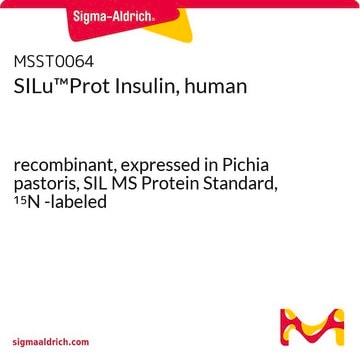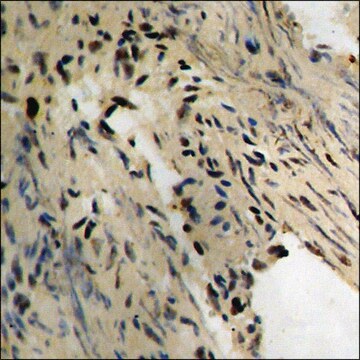MABN2275
Anti-phospho-Tau (Ser235) Antibody, clone RN235
clone RN235, from mouse
Synonym(s):
Microtubule-associated protein tau, Neurofibrillary tangle protein, Paired helical filament-tau, PHF-tau
About This Item
Recommended Products
biological source
mouse
antibody form
purified immunoglobulin
antibody product type
primary antibodies
clone
RN235, monoclonal
species reactivity
mouse, human
packaging
antibody small pack of 25 μg
technique(s)
ELISA: suitable
dot blot: suitable
immunofluorescence: suitable
immunohistochemistry: suitable (paraffin)
western blot: suitable
isotype
IgG1κ
NCBI accession no.
UniProt accession no.
target post-translational modification
phosphorylation (pSer235)
Gene Information
human ... MAPT(4137)
General description
Specificity
Immunogen
Application
Dot Blot analysis: A representative lot detected phosphorylated recombinant human tau (pSer235), but not the non-phosphorylated recombinant human tau (Tau). (Courtesy of Rebecca Nisbet, Ph.D., University of Queensland, Brisbane, Austraila).
Immunofluorescence Analysis: A representative lot detected phospho-tau (Ser235) in K3 and rTg4510 tau transgenic mouse brains (Courtesy of Rebecca Nisbet, Ph.D., University of Queensland, Brisbane, Austraila).
Immunohistochemistry (Paraffin) Analysis: A representative lot detected phospho-Tau (Ser235) in human Alzheimer s disease (AD) brain tissue sections. (Courtesy of Rebecca Nisbet, Ph.D., University of Queensland, Brisbane, Austraila).
ELISA Analysis: A representative lot full-length human recombinant phospho-tau (Ser235) or GSK-3 beta phosphorylated tau (pTau), but not the non-phosphorylated tau (Courtesy of Rebecca Nisbet, Ph.D., University of Queensland, Brisbane, Austraila).
Western Blotting Analysis: A representative lot detected phospho-tau (pSer235) K3 tau transgenic mouse brain homogenates, but not in homogenates from tau knock-out (KO) (Courtesy of Rebecca Nisbet, Ph.D., University of Queensland, Brisbane, Austraila).
Neuroscience
Quality
Western Blotting Analysis: 2 µg/mL of this antibody detected Microtubule-associated protein tau (pSer235) in brain tissue lysates from K3 transgenic mouse, but not in brain of microtubule-associated protein tau (MAPT) knock out mouse.
Target description
Physical form
Storage and Stability
Other Notes
Disclaimer
Not finding the right product?
Try our Product Selector Tool.
Storage Class Code
12 - Non Combustible Liquids
WGK
WGK 1
Flash Point(F)
Not applicable
Flash Point(C)
Not applicable
Certificates of Analysis (COA)
Search for Certificates of Analysis (COA) by entering the products Lot/Batch Number. Lot and Batch Numbers can be found on a product’s label following the words ‘Lot’ or ‘Batch’.
Already Own This Product?
Find documentation for the products that you have recently purchased in the Document Library.
Our team of scientists has experience in all areas of research including Life Science, Material Science, Chemical Synthesis, Chromatography, Analytical and many others.
Contact Technical Service








